
A “no-maintenance” garden is really all about the planning. There are several key things that you must do in the beginning of the season, that will greatly affect your garden for the whole year. It took me almost ten years to honestly convince myself that if I didn’t buck up and do these things early on, the rest of the season would be spent fighting the weeds and the watering. Not to mention, facing a lesser harvest.
This list is full of gardening master secrets that will make or break your no-maintenance garden goals. Your neighbors will comment on how well kept your garden is, and you won’t get burnt out from weeding and moving the water. And everyone here wants their neighbor to be jealous of their lovely garden right? It’s okay, your secret is safe with me.
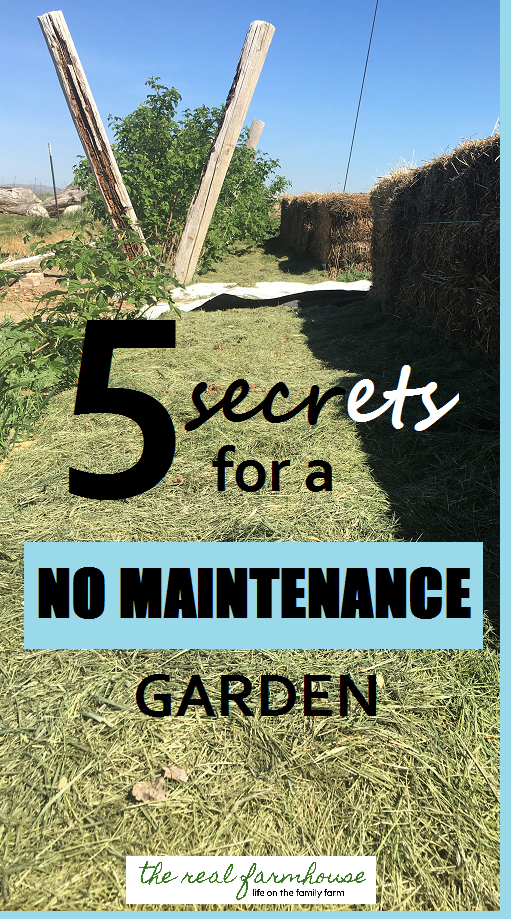
1.First off, you need to decide what you are planting in your garden this year. There are two main ways to plant your garden that will assist with the no maintenance, and that will depend a lot on what exactly you are planting.
If you are planting a very large garden with plenty of large plants like tomatoes, squash, corn, melons, etc. then you will want to plant your garden in nice straight rows.
If you are planting a smaller garden with a little bit of everything, then you may want to consider planting a dense garden with everything snuggled in close to each other.
I plant a very large garden, and the absolute easiest and most maintenance free way to plant is in long straight rows. Leave a walkway in between with enough room for the plants to grow into it a little ways.
2. Plants can be planted closer together than you think. If they are in single rows, the plants will expand outwards instead of into each other. If the plants are close together, they will shade out the weeds that want to grow in between them. Don’t put them so close that they crowd each other, but at least let them be friends and help each other out!
3. Start what plants you can indoors. If you plant something outside in your garden that is already 6 inches tall, it will be well on its way to shading out the weeds. If you plant seeds, you will have to weed two or three times before they are tall enough to do that. Plant starts instead of seeds for a less maintenance spring.
4. Once you have everything planted, the next steps are the most important. Setting up a drip system is possibly the most effective way to eliminate maintenance in your garden. Sprinklers water everything around your garden including the weeds. A drip system however, puts the water only to the roots of the plants you want to grow.
This one thing alone will greatly reduce the weeds you have to pull, will cut down on wasted water, and will make it so you have to water less often.
Before I put in my drip system, I was weeding every single day and watering three days a week. After I put it in, I only had to weed once a week for the first month or two after planting. After that, the plants shaded out the weeds, and nothing grew beyond them because the water was only going to the plants in my straight rows. I also started watering only once or twice a week because it went much deeper beneath the roots than it did with a sprinkler.
There are many different ways to set up a drip system. My favorite way is to use 3/4 inch PVC pipe and drill holes in it where you want the water to come out.
A slightly easier way, that doesn’t require any DIY, is to buy soaker hoses. These are nice in some situations where you need to bend the hose around something. However, they don’t last as long as a DIY PVC version. You can get a 25 foot soaker hose HERE on Amazon for $10.99
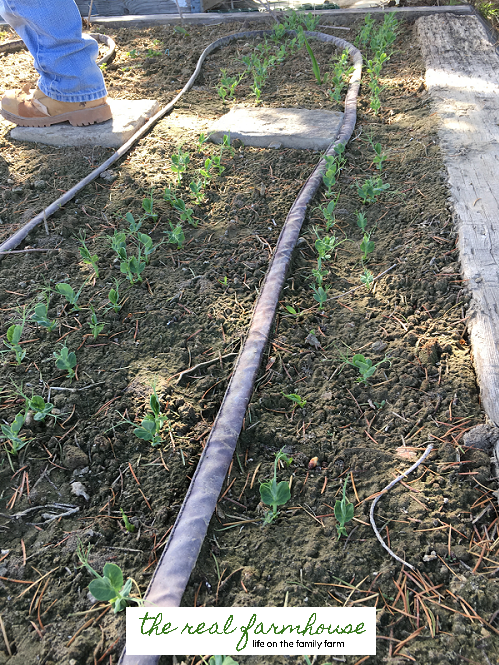
If you aren’t using a drip system of some kind already, make the switch now. I guarantee you will wish you did it sooner.
5. The last thing is a mulch or a cover of some kind. Weeds can’t grow if they don’t have sunlight. Covering your dirt is a simple, but completely effective way, to eliminate all weeds around your plants. There are a ton of different options for this one too.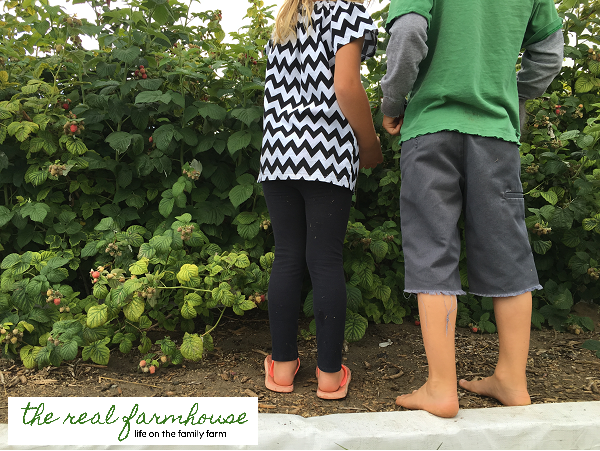
I have used many different things that have proven very effective. Actually, I use multiple methods in my garden every year, depending on what plant I am working around. To name a few, I have used :
- Newspaper
- Cardboard
- Grass clippings
- Bark
- Leaves
- Pine needles
- Tarp
- Gravel
- Sheets of plywood
- Straw
- Compost
Some of my favorites are newspaper and grass clippings around more permanent plants like my raspberry patch and my grapes. You can CLICK HERE to read more about that method.
I like to use just grass clippings, leaves, pine needles, or straw around the smaller plants so I can easily churn it back into the soil at the end of the season.
I use bark around permanent things that I want to look nice, like my roses out front.
I use tarp with holes cut in it for the larger plants that take up a lot of space like pumpkins, squash, and melons.
Mostly I just use whatever I can find that will smother out the weeds. I try to garden as inexpensively as I can, and covering weeds is no different. You can CLICK HERE to watch our YouTube video of how we keep our garden weed free.
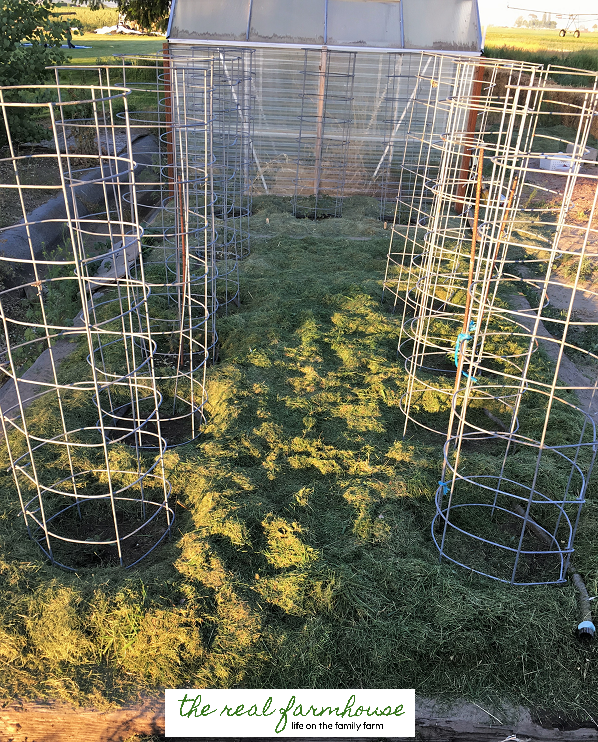
A couple tips to remember:
^^^The important thing to remember with this is that you have to block out all sunlight or it won’t be completely effective. Grass clippings, straw, and other types of mulch will need to be a few inches thick.
^^^Never put the mulch all the way up against the plant or it will cause it to rot and die. Your plants need to breath, so leave at least an inch or two all the way around the base.
Finally, there are three bonuses that I want to mention. If money were not an issue, there are three other things that make a big difference for maintenance that I would consistently do in my garden.
- Setting up a timer for your drip system. This automatically turns your water on and off just like a sprinkling system. You would literally never have to think about watering your garden unless there was some freak weather like 110 degree heat for a month or constant rain for two weeks. It’s not expensive, but when your garden budget is zilch like mine is, even $10 is a big deal. Besides, I have a weird thing for watering my garden. It relaxes me and I would honestly miss not going out to turn it on and off.
- Trellis everything you can. Weeding around sprawling plants like melons and squash is one of the few things I actually dislike in the garden. I hate trying to carefully work around a delicate vine that snaps when I try to move it. I also hate how they latch onto the weeds like a sucker fish on the side of a fish tank. Its dang near impossible to separate those little vines from a weed without breaking them. Setting up a trellis for all of these types of plants will make them happier and will make it easier to keep them weed free. It also makes a world of difference when you harvest, trust me.
- Purchase soil with no weed seed. Okay, this one is the real spendy one. Buying bagged soil for an entire garden is a serious expense. That’s why this falls under the “bonus” category. However, if you purchased bagged soil and put it two inches thick wherever you are planting, you are growing a garden in weed free soil. You don’t need it underneath the mulch or tarp, just right where you are planting. This would eliminate almost every weed that might even think about growing, and it would help free your garden of weeds in years to come.
If I actually follow my own advice and do all the things on this list, I only weed two or three times the entire season. That’s not an exaggeration guys. I plant my garden, set my drip system where I want it, cover everything but the plants, and hardly have to worry about it except to turn on the water once a week. I get compliments on my garden and my fruits and veggies are happier because they don’t have any weeds to compete with.
Here’s to a no maintenance year in the garden! Woo hoo!
~Farmer’s Wife
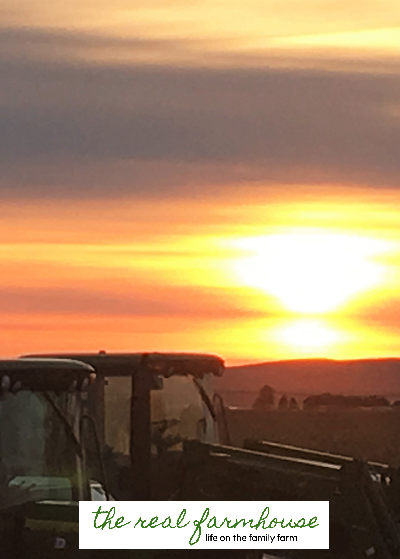
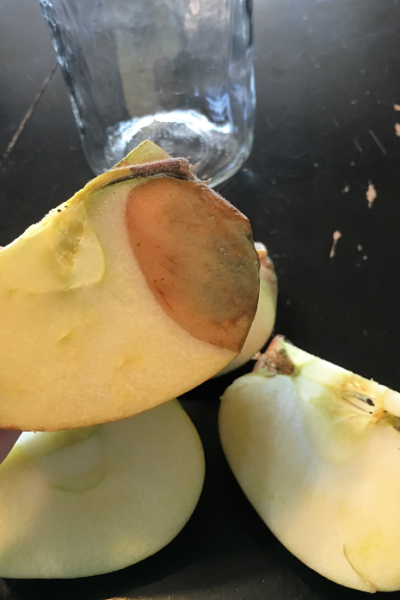
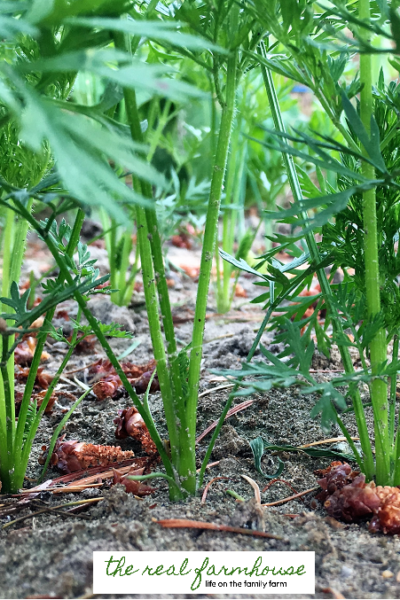
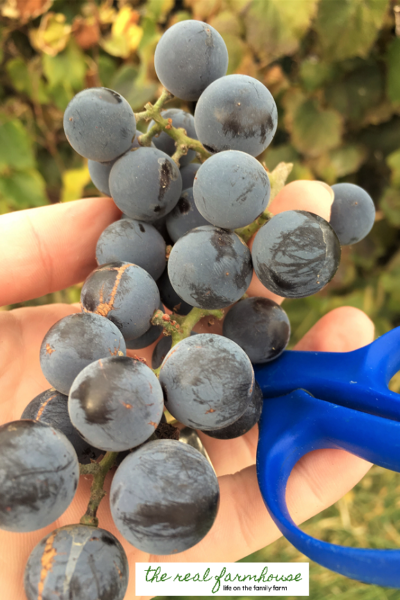
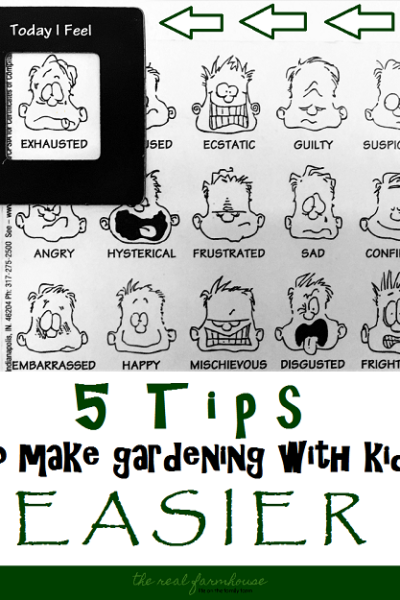
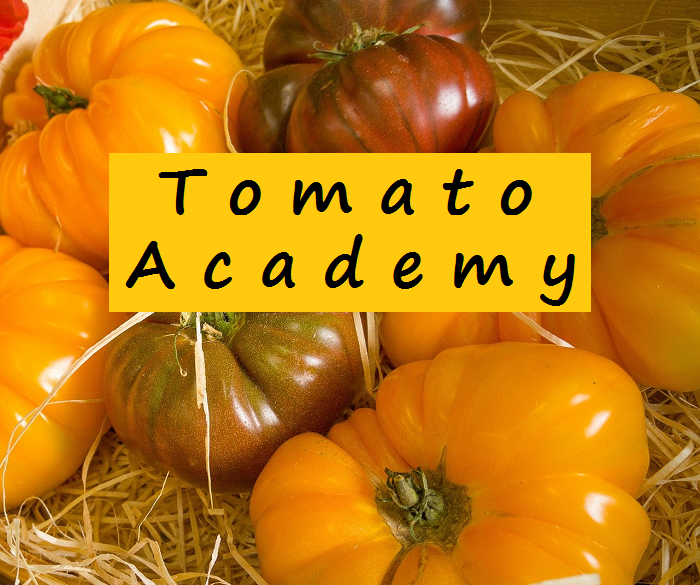
Thank you for your wonderful tips. I hope to get a garden planted soon, and will definitely be taking your advice!
Great and helpful advice. Thanks a bunch.
Your artical is so fill of wonderful advice and instructions that makes gardening seem doable and simpler than I thought it to be. Thank you for taking the time to help others garden effectively. Rosalie, Austin, Texas